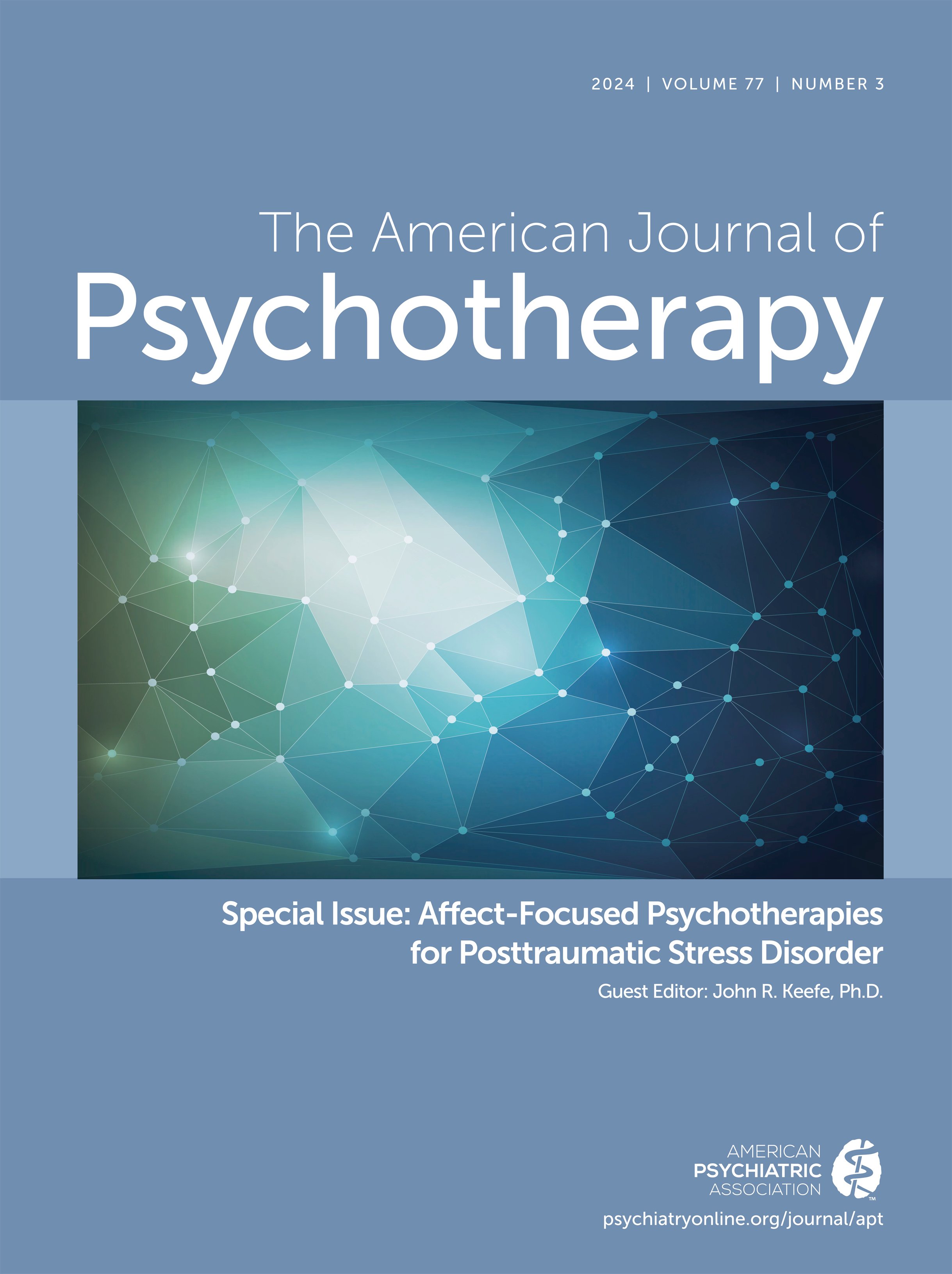American Journal of Psychotherapy
- Volume 50
- Number 1
- January 1996
Articles
Publication date: 01 January 1996
Pages3–13Psychoanalytic theory of psychopathology began as a theory of particular pathogenic agents in the form of repressed memories or drive-generated fantasies. It has developed in the direction of a theory of the mind’s organization; that is, a theory of ...
https://doi.org/10.1176/appi.psychotherapy.1996.50.1.3Publication date: 01 January 1996
Pages14–27To avoid the passions of love and hate between them, therapists and patients construct and preserve negative barriers of angry criticism, dissatisfaction, and sadomasochism. This review aims to help therapists tolerate and work with loving feelings ...
https://doi.org/10.1176/appi.psychotherapy.1996.50.1.14Publication date: 01 January 1996
Pages32–44This paper shows resistances in a benign light. The view is presented that psychoanalysts able to view resistances in a friendly light as challenges and guides, rather than as onerous roadblocks, experience maximum success for the patient and maximum ...
https://doi.org/10.1176/appi.psychotherapy.1996.50.1.32Publication date: 01 January 1996
Pages45–53An object relations model of resistance and therapeutic change based on Fairbatrn’s conception ofpsychopathology is presented in this paper. His recasting of the nature of the repressed in terms of malevolent inner objects is described. A clinical ...
https://doi.org/10.1176/appi.psychotherapy.1996.50.1.45Publication date: 01 January 1996
Pages54–65From an object relational perspective, couples are being viewed more and more as complex systems in which projective identificatory interactions are prevalently observable. The resistive aspect of the collusive arrangements established in couples becomes ...
https://doi.org/10.1176/appi.psychotherapy.1996.50.1.54Publication date: 01 January 1996
Pages66–74Self psychology views resistances as protecting a vulnerable self. Resistances are seen as efforts to maintain levels of organization that patients have achieved within the context of their traumatic life situation. Patients feel able to move forward in ...
https://doi.org/10.1176/appi.psychotherapy.1996.50.1.66Publication date: 01 January 1996
Pages75–89The development of the concept of resistance is briefly traced. The contributions of Spotnitz and his coworkers to the broadening of the concept of the Modern Analytic approach of supporting and resolving reistance are delineated. The ways in which ...
https://doi.org/10.1176/appi.psychotherapy.1996.50.1.75Publication date: 01 January 1996
Pages90–101This article describes multiple forms of resistances—patients toward reality, staff toward patients, staff toward staff, and my own counterresistances— in a hospital setting. Examples derive from within the psychiatric system itself, group work with a ...
https://doi.org/10.1176/appi.psychotherapy.1996.50.1.90Publication date: 01 January 1996
Pages103–124The cognitive mental module with which humans process and adapt to emotionally charged environmental or triggering events is identified as the emotion-processing mind. The current architecture of this mental module presents several anomalous features. In ...
https://doi.org/10.1176/appi.psychotherapy.1996.50.1.103Book Review
Publication date: 01 January 1996
Pages126–127https://doi.org/10.1176/appi.psychotherapy.1996.50.1.126Publication date: 01 January 1996
Pages127–128https://doi.org/10.1176/appi.psychotherapy.1996.50.1.127Publication date: 01 January 1996
Pages128–129https://doi.org/10.1176/appi.psychotherapy.1996.50.1.128Publication date: 01 January 1996
Pages129–130https://doi.org/10.1176/appi.psychotherapy.1996.50.1.129Publication date: 01 January 1996
Pages130–132https://doi.org/10.1176/appi.psychotherapy.1996.50.1.130Past Issues
View Issues Archive
Vol. 77 | No. 4

Vol. 77 | No. 3

Vol. 77 | No. 2
